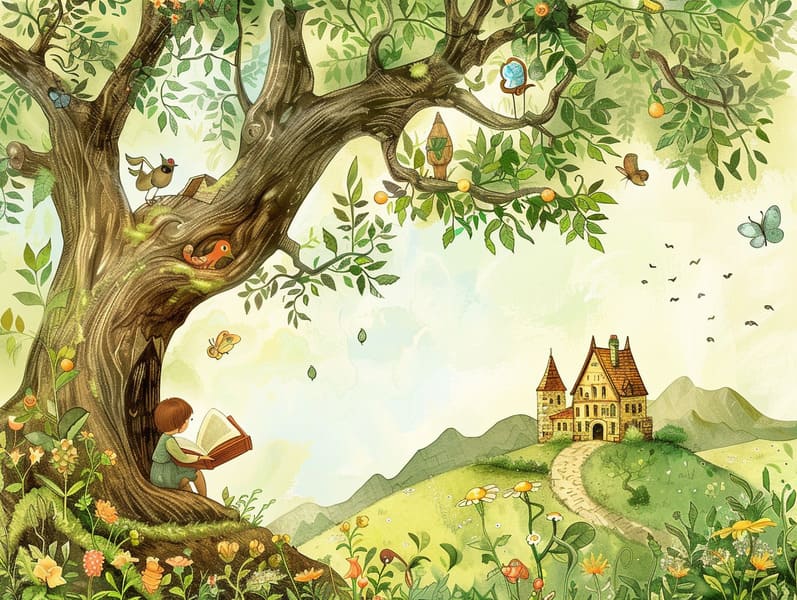The Rise of Old Fairy Tales and Their Everlasting Wonder.
The Rise of Old Fairy Tales and Their Everlasting Wonder.
Blog Article

Fairy tales have long histories. These stories have been spoken from one generation to the next ages before they were ever written down. They emerged from a variety of civilizations, including American traditions. They were initially disseminated among grown-ups, often carrying themes and messages concerning the societal norms and beliefs of the time.
The Brothers Grimm, Jacob and Wilhelm, were among the first to collect many of these beloved narratives. Their published works, "Grimm's Story Collection," included classics like "The Story of Cinderella," "Little Brother and Little Sister," and "Snow White," which have since become mainstays in the world of famous fairy tales. Similarly, the Danish author's enchanting narratives, such as "The Story of the Little Mermaid," and "The Duckling that Could," have won hearts worldwide, guaranteeing their place in the pantheon of timeless fairy tales.
Despite being ancient, these stories remain as significant as ever, especially as nighttime stories for kids. These whimsical stories are now available in diverse formats, including gorgeously illustrated books, enchanting animations, and digital storybooks.
Their persistent charm can be ascribed to several fascinating points:
Valuable Lessons: Traditional fairy tales often offer important moral lessons. Fairy tales like "The Tale of the Boy Who Cried Wolf" teach the importance of sincerity, while "The Tale of the Tortoise and the Hare" point out the merits of resolve and modesty. These narratives offer little ones clear distinctions between good and bad, molding their moral compass in a gentle yet important way.
Empathy and Awareness: Ancient fairy tales frequently showcase personalities facing struggles and tests, provoking children to understand with their struggles and rally behind their triumphs. For instance, "Beauty and Her Beast" teaches us the significance of looking deeper to see the true essence of a character, nurturing perception and insight.
Cultural Knowledge: Many old fairy tales are steeped in the cultural contexts from which they blossomed. Reading these fairy tales can provide delightful insights into different traditions, advancing a sense of world insight and acknowledgment.
Fantasy and Innovation: The supernatural elements in ancient fairy tales—fairy godmothers—invigorate children’s visions and dreams. These tales lead readers to mythical realms, generating innovative dreams and a sense of mystery that continues a lifetime.
Traditional fairy tales are not only captivating but also illuminating. They provide delightful tools in promoting various cognitive and emotional skills in kids. When old fairy tales are spoken, they promote language acquisition by presenting new language items and complicated sentence structures. This practice also cultivates listening skills and mindfulness, as young readers focus on every detail, keen to see what happens next.
Furthermore, analyzing the themes and characters of old fairy tales can advance intellectual skills and reasoning skills. Young readers are led to find patterns, anticipate outcomes, and get cause and effect. These discussions also benefit young ones utter their thoughts and feelings, enhancing their emotional intelligence.
In today’s cyber age, the prevalence of digital fairy tales has made these tales more available than ever. Digital sites and apps feature extensive collections of old fairy tales that can be read or heard anytime, anywhere. Fairy tales narrated are Grimm's fairy tales collection particularly well-received, presenting an delightful method for kids to appreciate these whimsical stories. Narrated books and read-out-loud stories transport characters and settings to life, often accompanied by delightful audio effects and instrumentals that raise the storytelling experience.
The timeless allure of ancient fairy tales lies in their ability to adapt to today's society while keeping their core messages. Contemporary renditions of these narratives often integrate more diverse protagonists and modern settings, making them accessible to today’s audience. However, the essential messages of boldness, benevolence, and honesty remain unchanged, continuing to appeal to audiences of all ages.
Classic fairy tales also offer a sense of reassurance and knowability. They make available a ordered narrative with a plain beginning, middle, and end, often concluding with the ending of conflicts and the triumph of good over evil. This constancy can be encouraging for children, presenting a sense of security in an always shifting world.
Traditional fairy tales continue to spellbind and coach new generations, maintaining their magic and importance in modern society. As nighttime stories for kids, they provide a perfect blend of enchantment and education, enriching moral values, empathy, and creativity. The accessibility of digital storybooks and the likability of fairy tales recited promise that these old tales remain accessible to new generations.
By keeping and narrating these narratives, we continue to venerate the rich tapestry of folklore and cultural heritage. Whether you are experiencing a beautifully illustrated book, experiencing a internet collection, or listening via an audiobook, the radiance of bedtime fairy tales is always within reach. These fairy tales reveal of the unfading spell of tales and its ability to tie us across generations and cultures.
Regardless if you are browsing a colorful picture book, seeing a online library, or listening on an read-aloud story, the spell of bedtime fairy tales is always within reach.
These narratives illustrate of the consistent essence of tales and its ability to unify us across centuries and lands, casting a charm that delights and instructs alike.